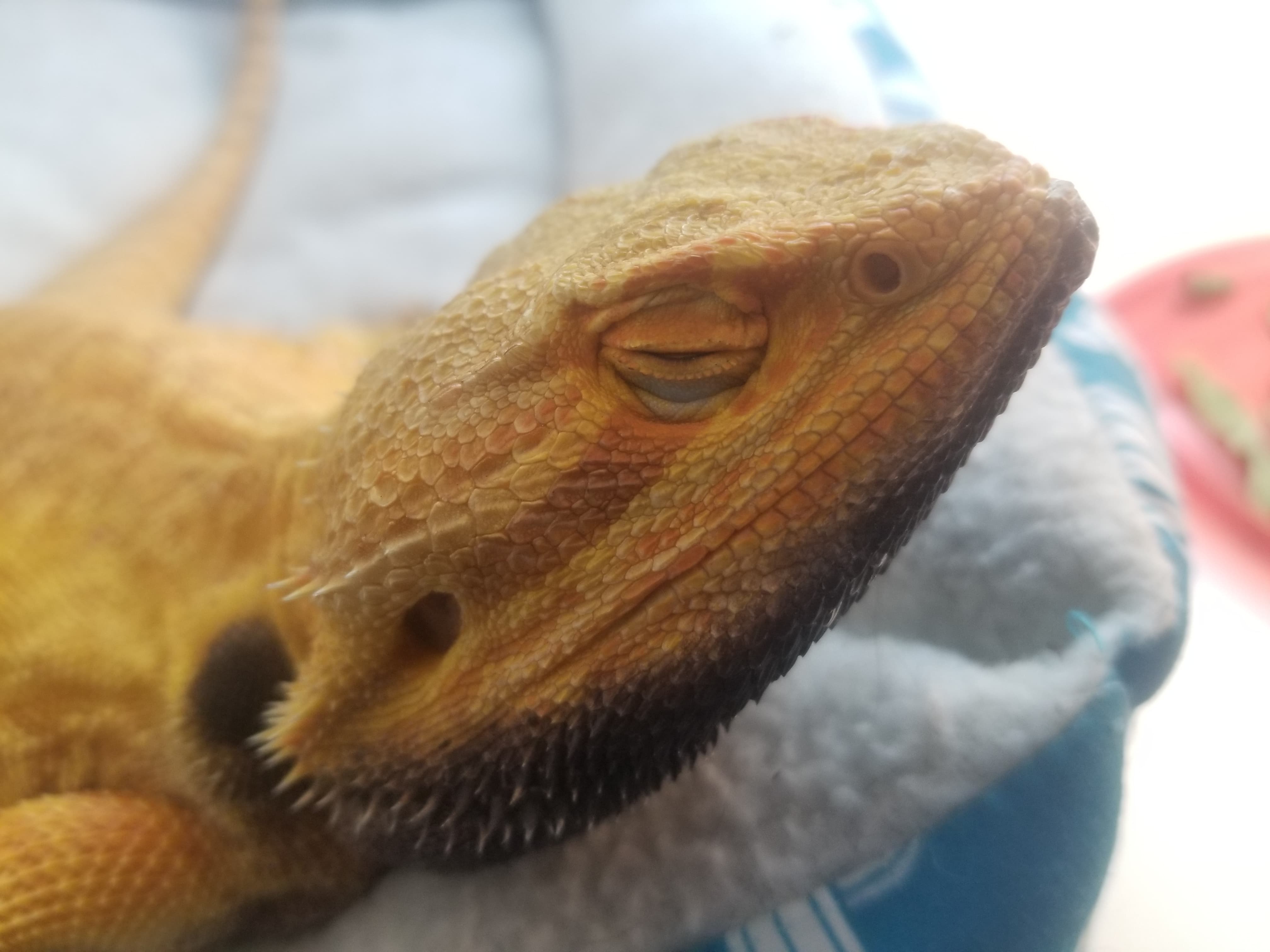Signs of a Sick Bearded Dragon

Frequent Vet Visits
Like any other pet, it is important to have your reptile seen by a reputable veterinarian. Specifically, a qualified herp vet. Not just once in a while, but frequently. Unfortunately, Bearded Dragons can become ill very easily with improper care whether it be from a poor diet to bad lighting. If you are new to Bearded Dragons, then please be sure to double check that your reptile’s enclosure setup and overall care is up to par. Also, keep in mind that there is a lot of bad information online when it comes to care advice. Therefore, you should always double check what you read (or hear) through multiple sources.
1) Odd Behavior
A Bearded Dragon that is not acting normal, is often one sign of a sick Bearded Dragon. For example, the reptile may no longer be interested in eating food. Furthermore, the reptile may not be basking under his or her heat light anymore. Last but not least, the reptile may be acting odd in general, such as showing signs of discomfort or stress. In summary, if your Bearded Dragon is not behaving normally, then it may be time to visit your local veterinarian.
2) Change of Appearance
Many illnesses are visible with the naked eye. For example, a Bearded Dragon with metabolic bone disease will eventually develop physical deformities. For instance, his or her tail may start to have kinks (crooked appearance). As another example, a Bearded Dragon with yellow fungus disease may have patches of yellow or brown on its scales that are spreading across the body. Furthermore, a Bearded Dragon that is dehydrated may have sunken eyes or wrinkled skin. Finally, a Bearded Dragon with an eye infection may have a swollen appearance or discharge. Keep in mind, there is a long list of illnesses that exist for Bearded Dragons and we’ve only named a few here. Overall, the idea is that a sick Bearded Dragon may start showing signs of being ill that can be seen with your own eyes.
3) List of Illnesses
| Illness | Symptoms |
|---|---|
| Metabolic Bone Disease | Bowed legs Bumps in the legs or spine Deformed appearance Jerky movements Lack of appetite Lethargic behavior Paralysis of the legs Swollen limbs or jaw Twitching in the legs or toes |
| Yellow Fungus Disease | Lack of appetite Lethargic behavior Patches of yellow or brown on scales |
| Atadenovirus | Contantly looking up Difficulty walking Lack of appetite Lethargic behavior Seizures Twitching |
| Respiratory Infection | Lack of appetite Lethargic behavior Breathing difficulties Mucus near mouth or nostrils |
| Dehydration | Drinks a lot of water when offered Lack of appetite Lethargic behavior Sunken eyes Wrinkled skin |
| Impaction | Unable to poop Foreign objects in stool, such as sand Lack of appetite Lethargic behavior Not pooping for multiple days Poorly digested stool Paralyis of back legs |
| Internal Parasites | Discolored stool Foul smelling stool Lack of appetite Poorly digested stool Weight loss |
| Mouth Rot | Black or loose teeth Discolored mouth Lack of appetite Lethargic behavior |
| Tail Rot | Black tail Black part of tail feels hard Black part of tail looks shriveled Black part of tail is progressing towards the body |
| Mites | Can be seen on body (near skin folds) Can be seen in enclosure Weight loss Lack of appetite Lethargic behavior Rubbing against decor (itching) Issues shedding |